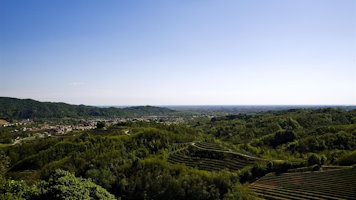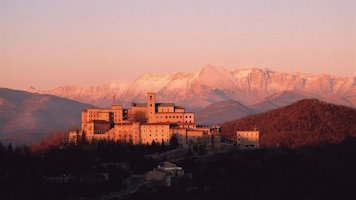Centa, Saints Peter and Paul Church
[11th?; 14th-16th; 18th centuries]
The dedication suggest the erection of the church in the early centuries after the year 1000, but its foundation seems to date back to the 14th century. The current building is attributable to the early 16th century when it was rebuilt after the damage caused by the 1511 and 1513 earthquakes and reconsecrated in 1547.
The façade is made of squared stone with a small window at the top and a mullioned window on the ridge with two bells. The roof is tiled, with stone slabs under the eaves. A sturdy external plinth runs along the walls of the choir; the wall of the ancient cemetery surrounds the building.
A pointed arch door, with shaped stone jambs, leads into the hall with exposed beams. A pointed triumphal arch separates the hall from the presbytery, rebuilt in the mid-16th century, following the Skofja Loka style, narrower and lower than the hall, with a rib-net ceiling and figured keys. Corbels depicting prophets are supported by elegant columns against the walls. In the left lunettes, we find statuettes of St. Christopher and St. George, and on the right, St. Matthias and St. Michael.
The main altarpiece hangs on the right wall of the hall and depicts the Virgin enthroned with Child, assisted by two Angels; on the base, is the Adoration of the Magi created by Girolamo Ridolfi of Cividale in 1585. The 17th-century wooden altar follows the model of the gilded altars (zlati oltar), carved and gilded, widespread from the Slovenian workshops of Caporetto or Gorizian workshops.

Ph. Stefania Gentili

Ph. Stefania Gentili

Ph. Stefania Gentili

ph. Giorgio Bianchi, Archive MCC














